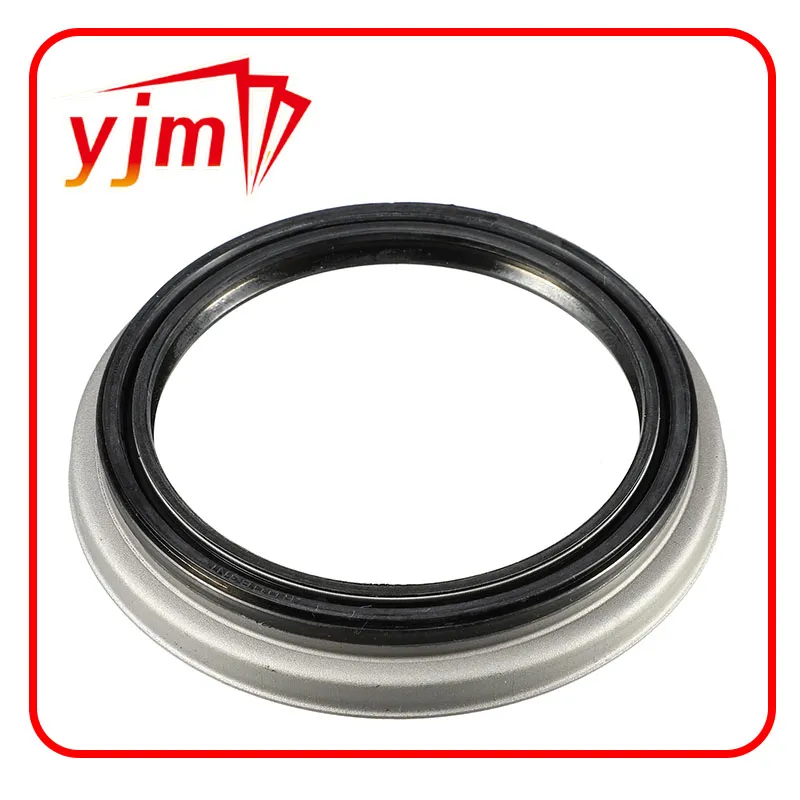Differential Side Seal Design for Enhanced Performance and Efficiency in Automotive Applications
Understanding Differential Side Seals An Essential Component in Automotive Engineering
In the realm of automotive engineering, the importance of each component in a vehicle cannot be overstated. Among these components, differential side seals play a crucial role in ensuring optimal performance and longevity of the vehicle's drivetrain. This article delves into the function, types, and significance of differential side seals, highlighting their role in the overall mechanics of a vehicle.
What is a Differential Side Seal?
A differential side seal is a crucial element within the differential assembly of a vehicle. The differential itself is responsible for allowing the wheels to rotate at different speeds, particularly useful during turns. It comprises several parts, including side gears, pinion gears, and the side seals. These seals are strategically placed to prevent the leakage of lubricating oil from the differential, which is vital for ensuring smooth and efficient operation.
Functions of Differential Side Seals
The primary function of differential side seals is to create a barrier that retains the lubricant within the differential housing. This lubricant reduces friction between moving parts, minimizing wear and heat buildup. If the lubricant leaks out, it can lead to inadequate lubrication, resulting in increased friction, overheating, and ultimately premature failure of the differential components. Moreover, side seals prevent contaminants such as dirt and debris from entering the differential, further enhancing the lifespan of the assembly.
Types of Differential Side Seals
Differential side seals come in various types, each designed for specific applications and performance criteria. The most common types include
1. Rubber Seals These are widely used due to their flexibility and ability to provide a tight seal. Rubber seals can accommodate slight misalignments and variations in dimension, making them a popular choice in many vehicle models.
differential side seal

2. Lip Seals These seals feature a lip that creates a contact area against the surface it seals. They are effective in maintaining a high level of lubrication retention and are commonly used in various differential applications.
3. Metal Seals Offering higher durability and resistance to extreme temperatures, metal seals are often employed in high-performance vehicles or specialized applications where heightened durability is essential.
4. Composite Seals Combining materials such as rubber and metal, composite seals aim to harness the benefits of both constituents. They provide excellent sealing capabilities while enhancing resistance to wear and environmental factors.
Importance of Maintaining Differential Side Seals
Neglecting the condition of differential side seals can lead to severe consequences for vehicle performance. A failed seal can result in oil leaks, which may not only diminish lubrication but also create a hazardous situation on the road. Additionally, contaminants entering the differential can lead to a myriad of problems, including gear wear and potential failure.
Regular maintenance checks can help identify signs of wear on side seals. Symptoms such as oil puddles beneath the vehicle or unusual noises from the differential can indicate that the seals need to be replaced. Replacing worn or damaged seals promptly is crucial to maintaining the efficiency and reliability of the differential system.
Conclusion
In conclusion, differential side seals might seem like small components within a complex system, yet their role in automotive engineering is vital. They ensure the effective operation of a vehicle's differential by preventing oil leaks and keeping contaminants at bay. Given the consequences of neglect and the importance of regular maintenance, it is imperative for vehicle owners and automotive professionals to comprehend the significance of differential side seals. By doing so, they can help ensure the longevity and reliability of vehicles, maintaining safety and performance on the road.
-
oil-drain-plug-washer-reusable-types
News Aug.22,2025
-
oil-drain-plug-replacement-guide
News Aug.22,2025
-
heavy-duty-seal-waterproof-features
News Aug.22,2025
-
engine-oil-seals-installation-guide
News Aug.22,2025
-
seal-oil-for-sale-high-temperature-grade
News Aug.22,2025
-
cassette-seal-compact-design
News Aug.22,2025
-
Simplifying Oil Changes: A Comprehensive Guide to Oil Drain Plugs and Their Variants
News Aug.04,2025
Products categories















